|
Reflections: Church Tlk.Sctn. (Sacr.Art/Img.) |
|
 |
Return
to Church Talk Reflections | Church
Talk (FRCC)
Reflections:
'Church Talk' Section:
Sacred Art / Images
Wisdom of the Popes, Saints, Theologians, Other...
|
|
Important Notice: We
make no guarantees regarding any item herein. Use of site is subject to
our terms of use. By using this site you indicate agreement to all
terms. For more terms information, see below and
click here.
|
Click link below or scroll down to view all...
Category |
Quotation |
|
The
Crucifix |
"From
what We have already explained, Venerable Brethren, it is
perfectly clear how much modern writers are wanting in the genuine
and true liturgical spirit who, deceived by the illusion of a
higher mysticism, dare to assert that attention should be paid not
to the historic Christ but to a 'pneumatic' or glorified Christ.
They do not hesitate to assert that a change has taken place in
the piety of the faithful by dethroning, as it were, Christ from
His position; since they say that the glorified Christ, who liveth
and reigneth forever and sitteth at the right hand of the Father,
has been overshadowed and in His place has been substituted that
Christ who lived on earth. For this reason, some have gone so far
as to want to remove from the churches images of the divine
Redeemer suffering on the cross. But these false statements are
completely opposed to the solid doctrine handed down by tradition.
'You believe in Christ born in the flesh,' says St. Augustine,
'and you will come to Christ begotten of God.' In the sacred
liturgy, the whole Christ is proposed to us in all the
circumstances of His life, as the Word of the eternal Father, as
born of the Virgin Mother of God, as He who teaches us truth,
heals the sick, consoles the afflicted, who endures suffering and
who dies; finally, as He who rose triumphantly from the dead and
who, reigning in the glory of heaven, sends us the Holy Paraclete
and who abides in His Church forever; 'Jesus Christ, yesterday and
today, and the same forever.' Besides, the liturgy shows us Christ
not only as a model to be imitated but as a master to whom we
should listen readily, a Shepherd whom we should follow, Author of
our salvation, the Source of our holiness and the Head of the
Mystical Body whose members we are, living by His very life. Since
His bitter sufferings constitute the principal mystery of our
redemption, it is only fitting that the Catholic faith should give
it the greatest prominence. This mystery is the very center of
divine worship since the Mass represents and renews it every day
and since all the sacraments are most closely united with the
cross." (Pope Pius XII, "Mediator Dei", 1947)
"But
it is neither wise nor laudable to reduce everything to antiquity
by every possible device. Thus, to cite some instances, one would
be straying from the straight path were he to wish the altar
restored to its primitive table form; were he to want black
excluded as a color for the liturgical vestments; were he to
forbid the use of sacred images and statues in churches; were he
to order the crucifix so designed that the divine Redeemer's body
shows no trace of His cruel sufferings; and lastly were he to
disdain and reject polyphonic music or singing in parts, even
where it conforms to regulations issued by the Holy See."
(Pope Pius XII, "Mediator Dei", 1947) [Note:
'Reducing to antiquity' does NOT refer to the
Traditionalists attempts to restore the traditional Latin
('Tridentine') Mass and pre-Vatican II practices, but to the
modernists quest to 'restore' the Church to a 'primitive form'
that better corresponds with Protestant sensibilities. In fact,
the 'reduction to antiquity' of the Modernists and the restoration
sought by the Traditionalists are diametrically opposed. The
'reducing to antiquity' of the Modernists has been condemned by
the popes - whereas true faithfulness to tradition has always been
guarded in the Church, and is even praised in Holy Scripture. For
more information, try the Latin
Mass / Catholic Tradition Section.)
Also
See: Cross
vs. Crucifix (Prayers & Devotions Section)
Note:
Categories are subjective and may overlap. For more items related
to this topic, please review all applicable categories. For more
'Reflections' and for Scripture topics, see links below.
Top |
Reflections: A-Z | Catg.
| Scripture: A-Z |
Catg.
| Help |
|
Rejected
Artwork |
"We
cannot help deploring and condemning those works of art, recently
introduced by some, which seem to be a distortion and perversion
of true art and which at times openly shock Christian taste,
modesty, and devotion, and shamefully offend the true religious
sense. These must be entirely excluded and banished from our
churches, like 'anything else that is not in keeping with the
sanctity of the place.''' (Pope Pius XII, "Mediator
Dei", 1947)
"Bishops
should be careful to ensure that works of art which are repugnant
to faith, morals, and Christian piety, and which offend true
religious sense either by depraved forms or through lack of
artistic merit or because of mediocrity or pretense, be removed
from the house of God and from other sacred places." (Second
Vatican Council)
"Can.
1279 § It is not permitted to anyone to place or to take care to
place in a church, even an exempt one, or other holy place, any
unusual image, unless it has been approved by the local Ordinary.
§ 2 The Ordinary shall not approve sacred images to be displayed
for the public veneration of the faithful that are not consistent
with the approved usage of the Church. § 3 The Ordinary shall
never allow in churches or other sacred places images of false
dogma to be exhibited or ones that do not offer the required
decency and honesty or that present an occasion of dangerous error
to the unlearned. § 4 If images publicly exposed for veneration are
solemnly blessed, this blessing is reserved to the Ordinary, who
nevertheless can commit it to any priest." (1917 Code of
Canon Law)
"Now
we are aware of the fact that during recent years some artists,
gravely offending against Christian piety, have dared to bring
into churches works devoid of any religious inspiration and
completely at variance with the right rules of art. They try to
justify this deplorable conduct by plausible-looking arguments
which they claim are based on the nature and character of art
itself. They go on to say that artistic inspiration is free and
that it is wrong to impose upon it laws and standards extraneous
to art, whether they are religious or moral, since such rules
seriously hurt the dignity of art and place bonds and shackles on
the activity of an inspired artist. Arguments of this kind raise a
question which is certainly difficult and serious, and which
affects all art and every artist. It is a question which is not to
be answered by an appeal to the principles of art or of
aesthetics, but which must be decided in terms of the supreme
principle of the final end, which is the inviolate and sacred rule
for every man and every human act. The ordination and direction of
man to his ultimate end - which is God - by absolute and necessary
law based on the nature and the infinite perfection of God Himself
is so solid that not even God could exempt anyone from it. This
eternal and unchangeable law commands that man himself and all his
actions should manifest and imitate, so far as possible, God's
infinite perfection for the praise and glory of the Creator. Since
man is born to attain this supreme end, he ought to conform
himself and through his actions direct all powers of his body and
his soul, rightly ordered among themselves and duly subjected to
the end they are meant to attain, to the divine Model. Therefore
even art and works of art must be judged in the light of their
conformity and concord with man's last end. Art certainly must be
listed among the noblest manifestations of human genius. Its
purpose is to express in human works the infinite divine beauty of
which it is, as it were, the reflection. Hence that outworn dictum
'art for art's sake' entirely neglects the end for which every
creature is made. Some people wrongly assert that art should be
exempted entirely from every rule which does not spring from art
itself. Thus this dictum either has no worth at all or is gravely
offensive to God Himself, the Creator and Ultimate End. Since the
freedom of the artist is not a blind instinct to act in accordance
with his own whim or some desire for novelty, it is in no way
restricted or destroyed, but actually ennobled and perfected, when
it is made subject to the divine law. Since this is true of works
of art in general, it obviously applies also to religious and
sacred art. Actually religious art is even more closely bound to
God and the promotion of His praise and glory, because its only
purpose is to give the faithful the greatest aid in turning their
minds piously to God through the works it directs to their senses
of sight and hearing. Consequently the artist who does not profess
the truths of the faith or who strays far from God in his attitude
or conduct should never turn his hand to religious art. He lacks,
as it were, that inward eye with which he might see what God's
majesty and His worship demand. Nor can he hope that his works,
devoid of religion as they are, will ever really breathe the piety
and faith that befit God's temple and His holiness, even though
they may show him to be an expert artist who is endowed with
visible talent. Thus he cannot hope that his works will be worthy
of admission into the sacred buildings of the Church, the guardian
and arbiter of religious life. But the artist who is firm in his
faith and leads a life worthy of a Christian, who is motivated by
the love of God and reverently uses the powers the Creator has
given him, expresses and manifests the truths he holds and the
piety he possesses so skillfully, beautifully and pleasingly in
colors and lines or sounds and harmonies that this sacred labor of
art is an act of worship and religion for him. It also effectively
arouses and inspires people to profess the faith and cultivate
piety. The Church has always honored and always will honor this
kind of artist. It opens wide the doors of its temples to them
because what these people contribute through their art and
industry is a welcome and important help to the Church in carrying
out its apostolic ministry more effectively." (Pope Pius XII,
"Musicae Sacrae", 1955)
Also
See: Beauty
& Decorum in the House of God
| Goodness
/ Beauty
Note:
Categories are subjective and may overlap. For more items related
to this topic, please review all applicable categories. For more
'Reflections' and for Scripture topics, see links below.
Top |
Reflections: A-Z | Catg.
| Scripture: A-Z |
Catg.
| Help |
|
Repair
of Images |
"Can.
1189 If they are in need of repair, precious images, that is,
those distinguished by age, art, or veneration, which are
exhibited in churches or oratories for the reverence of the
faithful are never to be restored without the written permission
of the ordinary; he is to consult experts before he grants
permission." (1983 Code of Canon Law)
Also
See: Building
/ Refurbishing of Churches | Disposition
of Church Items
Note:
Categories are subjective and may overlap. For more items related
to this topic, please review all applicable categories. For more
'Reflections' and for Scripture topics, see links below.
Top |
Reflections: A-Z | Catg.
| Scripture: A-Z |
Catg.
| Help |
|
Sacred
Art
Also See:
Catholic Artwork (Topic Page)
|
"[T]he
religious theme has been among those most frequently treated by
artists in every age." (Pope John Paul II, 1999)
"Painting is employed in churches so that those who
cannot read or write may at least read on the walls what they
cannot decipher on the page" (Pope St.
Gregory the Great, Doctor of the Church, 599 A.D.)
"The
image is the book of those who cannot read, and even the learned
may gain more from an instant's gazing at an eloquent picture than
from the prolonged study of many volumes." (Gueranger)
"In
order to communicate the message entrusted to her by Christ, the
Church needs art. Art must make perceptible, and as far as
possible attractive, the world of the spirit, of the invisible, of
God. It must therefore translate into meaningful terms that which
is in itself ineffable. Art has a unique capacity to take one or
other facet of the message and translate it into colors, shapes
and sounds which nourish the intuition of those who look or
listen. It does so without emptying the message itself of its
transcendent value and its aura of mystery. The Church has need
especially of those who can do this on the literary and figurative
level, using the endless possibilities of images and their
symbolic force. Christ himself made extensive use of images in his
preaching, fully in keeping with his willingness to become, in the
Incarnation, the icon of the unseen God." (Pope John Paul II,
1999)
"The
art which Christianity encountered in its early days was the ripe
fruit of the classical world, articulating its aesthetic canons
and embodying its values. Not only in their way of living and
thinking, but also in the field of art, faith obliged Christians
to a discernment which did not allow an uncritical acceptance of
this heritage. Art of Christian inspiration began therefore in a
minor key, strictly tied to the need for believers to contrive
Scripture-based signs to express both the mysteries of faith and a
'symbolic code' by which they could distinguish and identify
themselves, especially in the difficult times of
persecution." (Pope John Paul II, 1999)
"We
declare that we preserve intact all the written and unwritten
traditions of the Church which have been entrusted to us. One of
these traditions consists in the production of representational
artwork, which accords with the history of the preaching of the
Gospel. For it confirms that the incarnation of the Word of God
was real and not imaginary, and to our benefit as well, for
realities that illustrate each other undoubtedly reflect each
other's meaning." (Second Council of Nicaea, 787 A.D.)
"If
anyone does not confess that Christ our God can be represented in
His humanity, let him be anathema. If anyone does not accept
representation in art of evangelical scenes, let him be anathema.
If anyone does not salute such representations as standing for the
Lord and His saints, let him be anathema." (Second Council of
Nicaea, 787 A.D.) "Those,
therefore, who dare to think or to teach otherwise or to spurn
according to wretched heretics the ecclesiastical traditions and
to invent anything novel, or to reject anything from these things
which have been consecrated by the Church: either the Gospel or
the figure of the Cross, or the (representational) picture, or the
sacred relics of the martyr; or to invent perversely and cunningly
for the overthrow of any one of the legitimate traditions of the
Catholic Church; or even, as it were, to use the sacred vessels or
the venerable monasteries as common things; if indeed they are
bishops or clerics, we order (them) to be deposed; monks, however,
or laymen, to be excommunicated." (Second Council of Nicaea,
787 A.D.)
"The
fine arts are rightly classed among the noblest activities of
man's genius; this is especially true of religious art and of its
highest manifestation, sacred art. Of their nature the arts are
directed toward expressing in some way the infinite beauty of God
in works made by human hands. Their dedication to the increase of
God's praise and of his glory is more complete, the more
exclusively they are devoted to turning men's minds devoutly
toward God. For that reason holy Mother Church has always been the
patron of the fine arts and has ever sought their noble ministry,
to the end especially that all things set apart for use in divine
worship should be worthy, becoming, and beautiful, signs and
symbols of things supernatural." (Second Vatican Council)
"[T]he
great masters of Christian arts became interpreters, not only of
the beauty but also of the goodness of God, the Revealer and
Redeemer. Marvelous exchange of services between Christianity and
art! From their Faith they drew sublime inspirations. They drew
hearts to the Faith when for continuous centuries they
communicated and spread the truths contained in the Holy
Scriptures, truths inaccessible, at least directly, to the humble
people...In truth, artistic masterpieces were known as the 'Bible
of the people,' to mention such noted examples as the windows of
Chartres, the door of Ghiberti (by happy expression known as the
Door of Paradise), the Roman and Ravenna mosaics and the facade of
the Cathedral of Orvieto. These and other masterpieces not only
translate into easy reading and universal language the Christian
truths, they also communicate the intimate sense and emotion of
these truths with an effectiveness, lyricism and ardor that,
perhaps, is not contained in even the most fervent preaching.
Souls ennobled, elevated and prepared by art, are thus better
disposed to receive the religious truths and the grace of Jesus
Christ. This is one of the reasons why the Sovereign Pontiffs, and
the Church in general, honored and continue to honor art and to
offer its works as a tribute of human beings to God's Majesty in
His churches, which have always been abodes of art and religion at
the same time." (Pope Pius XII, 1952)
"What
We have said about music, applies to the other fine arts,
especially to architecture, sculpture and painting. Recent works
of art which lend themselves to the materials of modern
composition, should not be universally despised and rejected
through prejudice. Modern art should be given free scope in the
due and reverent service of the church and the sacred rites,
provided that they preserve a correct balance between styles
tending neither to extreme realism nor to excessive 'symbolism,'
and that the needs of the Christian community are taken into
consideration rather than the particular taste or talent of the
individual artist. Thus modern art will be able to join its voice
to that wonderful choir of praise to which have contributed, in
honor of the Catholic faith, the greatest artists throughout the
centuries. Nevertheless, in keeping with the duty of Our office,
We cannot help deploring and condemning those works of art,
recently introduced by some, which seem to be a distortion and
perversion of true art and which at times openly shock Christian
taste, modesty and devotion, and shamefully offend the true
religious sense. These must be entirely excluded and banished from
our churches, like 'anything else that is not in keeping with the
sanctity of the place.'" (Pope Pius XII, "Mediator
Dei", 1947)
"Sacred
Scripture has thus become a sort of 'immense vocabulary'... from
which both Christian culture and art have drawn. The Old
Testament, read in the light of the New, has provided endless
streams of inspiration. From the stories of the Creation and sin,
the Flood, the cycle of the Patriarchs, the events of the Exodus
to so many other episodes and characters in the history of
salvation, the biblical text has fired the imagination of
painters, poets, musicians, playwrights and film-makers. A figure
like Job, to take but one example, with his searing and ever
relevant question of suffering, still arouses an interest which is
not just philosophical but literary and artistic as well. And what
should we say of the New Testament? From the Nativity to Golgotha,
from the Transfiguration to the Resurrection, from the miracles to
the teachings of Christ, and on to the events recounted in the
Acts of the Apostles or foreseen by the Apocalypse in an
eschatological key, on countless occasions the biblical word has
become image, music and poetry, evoking the mystery of 'the Word
made flesh' in the language of art. In the history of human
culture, all of this is a rich chapter of faith and beauty.
Believers above all have gained from it in their experience of
prayer and Christian living. Indeed for many of them, in times
when few could read or write, representations of the Bible were a
concrete mode of catechesis. But for everyone, believers or not,
the works of art inspired by Scripture remain a reflection of the
unfathomable mystery which engulfs and inhabits the world."
(Pope John Paul II, 1999)
Also
See: Beauty
& Decorum in the House of God
| Goodness
/ Beauty | Reverence
| Sacred
Images / Veneration of Images | Rejected
Artwork | Who
Should / Should Not Participate in the Making of Sacred Art | Sacred
Music
Note:
Categories are subjective and may overlap. For more items related
to this topic, please review all applicable categories. For more
'Reflections' and for Scripture topics, see links below.
Top |
Reflections: A-Z | Catg.
| Scripture: A-Z |
Catg.
| Help |
|
Sacred
Images / Veneration of Images
Also See:
Catholic Artwork (Topic Page)
|
"We
admit that images should be venerated. Those of us who are not so
minded we subject to anathema." (Second Council of Nicaea, 787
A.D.)
"[I]t
is lawful to have images in churches, and to pay them honor and
respect, since this respect is referred to their prototypes... the
uninterrupted observance of this practice down to the present day
has been attended with great advantage to the faithful"
(Catechism of the Council of Trent)
"Those,
therefore, who dare to think or to teach otherwise or to spurn
according to wretched heretics the ecclesiastical traditions and
to invent anything novel, or to reject anything from these things
which have been consecrated by the Church: either the Gospel or
the figure of the Cross, or the (representational) picture, or the
sacred relics of the martyr; or to invent perversely and cunningly
for the overthrow of any one of the legitimate traditions of the
Catholic Church; or even, as it were, to use the sacred vessels or
the venerable monasteries as common things; if indeed they are
bishops or clerics, we order (them) to be deposed; monks, however,
or laymen, to be excommunicated." (Second Council of Nicaea,
787 A.D.)
"[T]he
images of the Saints are placed in churches, not only to be
honored, but also that they may admonish us by their examples to
imitate their lives and virtues." (Catechism of the Council
of Trent)
"If
anyone does not confess that Christ our God can be represented in
his humanity, let him be anathema." (Second Council of Nicaea,
787 A.D.)
"If
anyone does not accept representation in art of evangelical
scenes, let him be anathema." (Second Council of Nicaea, 787
A.D.)
"If
anyone does not salute such representations as standing for the
Lord and his saints, let him be anathema." (Second Council of
Nicaea, 787 A.D.)
"The
worship of religion is paid to images, not as considered in
themselves, nor as things, but as images leading us to God
incarnate. Now movement to an image as image does not stop at the
image, but goes on to the thing it represents." (St. Thomas
Aquinas, Doctor of the Church and "greatest theologian in the
history of the Church")
"[T]he
image itself, considered as a thing, is not to be venerated in any
way at all." (St. Thomas Aquinas, Doctor of the Church and
"greatest theologian in the history of the Church")
"Can.
1188 The practice of displaying sacred images in churches for the
reverence of the faithful is to remain in effect. Nevertheless,
they are to be exhibited in moderate number and in suitable
fashion so that the Christian people are not confused nor occasion
given for inappropriate devotion." (1983 Code of Canon Law)
"Can.
1280 Precious images, that is, those outstanding by virtue of age,
art, or cult, exposed in churches or public oratories for the
veneration of the faithful, if sometime they should require
repair, shall never be restored without consent from the Ordinary
given in writing, who before granting this permission shall
consult wise and expert men." (1917 Code of Canon Law)
"These
are the footprints left by the saints in their journey homeward,
that guided by them we might follow them into glory.' In order
that we may be helped by our senses, also, the Church wishes that
images of the saints be displayed in our churches, always,
however, with the same intention 'that we imitate the virtues of
those whose images we venerate.'" (Pope Pius XII,
"Mediator Dei", 1947)
"The
beauty of the images moves me to contemplation, as a meadow
delights the eyes and subtly infuses the soul with the glory of
God." (St. John Damascene, Doctor of the Church) "This
most Holy Synod deliberately teaches this Catholic doctrine and at
the same time admonishes all the sons of the Church that the cult,
especially the liturgical cult, of the Blessed Virgin, be
generously fostered, and the practices and exercises of piety,
recommended by the magisterium of the Church toward her in the
course of centuries be made of great moment, and those decrees,
which have been given in the early days regarding the cult of
images of Christ, the Blessed Virgin and the saints, be
religiously observed." (Second Vatican Council)
"Movement
towards an image as such is referred to the thing represented by
the image...the movement towards an image is, after a fashion,
towards the thing, yet the movement towards the thing need not be
towards its image. Wherefore reverence paid to a person as the
image of God redounds somewhat to God: and yet this differs from
the reverence that is paid to God Himself, for this in no way
refers to His image." (St. Thomas Aquinas, Doctor of the
Church and "greatest theologian in the history of the
Church")
"Moreover,
in the invocation of saints, the veneration of relics, and the
sacred use of images, every superstition shall be removed, all
filthy lucre be abolished; finally, all lasciviousness be avoided;
in such wise that figures shall not be painted or adorned with a
beauty exciting to lust; nor the celebration of the saints, and
the visitation of relics be by any perverted into revellings and
drunkenness; as if festivals are celebrated to the honor of the
saints by luxury and wantonness." (Council of Trent,
Twenty-fifth Session)
"[W]e
utterly rebuke the detestable abuse and horrible impiety of those
who treating with irreverent boldness crucifixes and images or
statues of the blessed Virgin and other saints, throw them to the
ground in order to emphasize the suspension of divine worship, and
leave them under nettles and thorns. We forbid severely any
sacrilege of this kind. We decree that those who disobey are to
receive a hard retributive sentence which will so chastise the
offenders as to suppress the like arrogance in others."
(Second Council of Lyons)
"And
if any abuses have crept in amongst these holy and salutary
observances, the holy Synod ardently desires that they be utterly
abolished; in such wise that no images, (suggestive) of false
doctrine, and furnishing occasion of dangerous error to the
uneducated, be set up. And if at times, when expedient for the
unlettered people; it happen that the facts and narratives of
sacred Scripture are portrayed and represented; the people shall
be taught, that not thereby is the Divinity represented, as though
it could be seen by the eyes of the body, or be portrayed by
colors or figures." (Council of Trent, Twenty-fifth Session)
"If
we have previously disapproved of the error of those who would
wish to outlaw images from churches on the plea of reviving an
ancient tradition, We now deem it Our duty to censure the
inconsiderate zeal of those who propose for veneration in the
Churches and on the altars, without any just reason, a multitude
of sacred images and statues, and also those who display
unauthorized relics, those who emphasize special and insignificant
practices, neglecting essential and necessary things. They thus
bring religion into derision and lessen the dignity of worship.
Let us recall, as well, the decree about 'not introducing new
forms of worship and devotion.' We commend the exact observance of
this decree to your vigilance." (Pope Pius XII,
"Mediator Dei", 1947)
"The
mysteries of our Redemption, as they are expressed in pictures or
in other likenesses, instruct and encourage the people to call to
mind habitually and go over the articles of faith. Let them also
teach that this great benefit is realized from all sacred images
not only because the people are reminded of the favors and of the
gifts which were given to them by Christ, but also because through
the saints of God miracles and salutary examples are put before
the eyes of the faithful, so that they may give thanks to God for
them, that they may fashion their lives and their actions in
imitation of the saints, and that they may be spurred on to adore
and love God and to cultivate piety." (Council of Trent)
"[T]here
arose in the early centuries a bitter controversy known to history
as 'the iconoclast crisis'. Sacred images, which were already
widely used in Christian devotion, became the object of violent
contention. The Council held at Nicaea in 787, which decreed the
legitimacy of images and their veneration, was a historic event
not just for the faith but for culture itself. The decisive
argument to which the Bishops appealed in order to settle the
controversy was the mystery of the Incarnation: if the Son of God
had come into the world of visible realities - his humanity
building a bridge between the visible and the invisible - then, by
analogy, a representation of the mystery could be used, within the
logic of signs, as a sensory evocation of the mystery. The icon is
venerated not for its own sake, but points beyond to the subject
which it represents." (Pope John Paul II, 1999)
"Moreover,
that the images of Christ, of the Virgin Mother of God, and of the
other saints, are to be placed and retained especially in the
churches, and that due honor and veneration be extended to them,
not that any divinity or virtue is believed to be in them, for
which they are to be venerated, or that anything is to be
petitioned from them, or that trust is to be placed in images, as
at one time was done by the gentiles, who placed their hope in
idols [cf. Ps. 134:15 f.], but because the honor which is shown
them, is referred to the prototypes which they represent, so that
by means of the images, which we kiss and before which we bare the
head and prostrate ourselves, we adore Christ, and venerate the
saints, whose likeness they bear. This is what was sanctioned by
the decrees of the councils, especially that of the second council
of Nicea, against the opponents of images." (Council of
Trent, 1563 A.D.)
"Indeed
let the bishops diligently teach this, that by the accounts of the
mysteries of our redemption, portrayed in pictures or in other
representations, the people are instructed and confirmed in the
articles of faith which should be kept in mind and constantly
pondered over; then, too, that from all sacred images great profit
is derived not only because the people are reminded of the
benefits and gifts, which are bestowed upon them by Christ, but
also, because through the saints the miracles of God and salutary
examples are set before the eyes of the faithful, so that they may
give thanks to God for those things, may fashion their own lives
and conduct in imitation of the saints, and be stimulated to adore
and love God, and to cultivate piety. But if anyone should teach
or maintain anything contrary to these decrees, let him be
anathema." (Council of Trent)
"And
that these things may be the more faithfully observed, the holy
Synod ordains, that no one be allowed to place, or cause to be
placed, any unusual image, in any place, or church, howsoever
exempted, except that image have been approved of by the bishop:
also, that no new miracles are to be acknowledged, or new relics
recognized, unless the said bishop has taken cognizance and
approved thereof; who, as soon as he has obtained some certain
information in regard to these matters, shall, after having taken
the advice of theologians, and of other pious men, act therein as
he shall judge to be consonant with truth and piety. But if any
doubtful, or difficult abuse has to be extirpated; or, in fine, if
any more grave question shall arise touching these matters, the
bishop, before deciding the controversy, shall await the sentence
of the metropolitan and of the bishops of the province, in a
provincial Council; yet so, that nothing new, or that previously
has not been usual in the Church, shall be resolved on, without
having first consulted the most holy Roman Pontiff." (Council
of Trent, Twenty-fifth Session)
"We
decree that the sacred image of our lord Jesus Christ, the
redeemer and savior of all people, should be venerated with honor
equal to that given to the book of the holy gospels. For, just as
through the written words which are contained in the book, we all
shall obtain salvation, so through the influence that colors in
painting exercise on the imagination, all, both wise and simple,
obtain benefit from what is before them; for as speech teaches and
portrays through syllables, so too does painting by means of
colors. It is only right then, in accordance with true reason and
very ancient tradition, that icons should be honored and venerated
in a derivative way because of the honor which is given to their
archetypes, and it should be equal to that given to the sacred
book of the holy gospels and the representation of the precious
cross. If anyone then does not venerate the icon of Christ, the
Savior, let him not see his face when he comes in his Father's
glory to be glorified and to glorify his saints', but let him be
cut off from his communion and glory; likewise the image of
Mary, His undefiled Mother, and mother of God, moreover, we also
represent the images of the holy angels just as divine scripture depicts them in
words; we also honor and venerate those of the highly renowned
apostles, prophets, martyrs and holy men as well as those of all
the saints. And whoever does not hold thus, let him be anathema from the Father, and the Son, and the Holy
Spirit." (Canon 3, Fourth
Council of Constantinople)
"We, continuing in the regal path, and following the divinely inspired teaching of our Holy Fathers, and the tradition of the Catholic Church, for we know that this is of the Holy Spirit who certainly dwells in it, define in all certitude and diligence that as the figure of the honored and life-giving Cross, so the venerable and holy images, the ones from tinted materials and from marble as those from other material, must be suitably placed in the holy churches of God, both on sacred vessels and vestments, and on the walls and on the altars, at home and on the streets, namely such images of our Lord Jesus Christ, God and Savior, and of our undefiled lady, or holy Mother of God, and of the honorable angels, and, at the same time, of all the saints and of holy men. For, how much more frequently through
(artistic representation) they are seen, so much more quickly are those who contemplate these, raised to the memory and desire of the originals of these, to kiss and to render honorable adoration to them, not however, to grant true latria according to our faith, which is proper to divine nature alone; but just as to the figure of the revered and life-giving Cross and to the holy gospels, and to the other sacred monuments, let an oblation of incense and lights be made to give honor to these as was the pious custom with the ancients. 'For the honor of the image passes to the original'; and he who shows reverence to the image, shows reverence to the substance of Him depicted in it."
(Second Council of Nicaea, 787 A.D.)
"But
it is neither wise nor laudable to reduce everything to antiquity
by every possible device. Thus, to cite some instances, one would
be straying from the straight path were he to wish the altar
restored to its primitive table form; were he to want black
excluded as a color for the liturgical vestments; were he to
forbid the use of sacred images and statues in churches; were he
to order the crucifix so designed that the divine Redeemer's body
shows no trace of His cruel sufferings; and lastly were he to
disdain and reject polyphonic music or singing in parts, even
where it conforms to regulations issued by the Holy See."
(Pope Pius XII, "Mediator Dei", 1947) [Note:
'Reducing to antiquity' does NOT refer to the
Traditionalists attempts to restore the traditional Latin
('Tridentine') Mass and pre-Vatican II practices, but to the
modernists quest to 'restore' the Church to a 'primitive form'
that better corresponds with Protestant sensibilities. In fact,
the 'reduction to antiquity' of the Modernists and the restoration
sought by the Traditionalists are diametrically opposed. The
'reducing to antiquity' of the Modernists has been condemned by
the popes - whereas true faithfulness to tradition has always been
guarded in the Church, and is even praised in Holy Scripture. For
more information, try the Latin
Mass / Catholic Tradition Section.)
Also
See: Beauty
& Decorum in the House of God
| Reverence
| Kneeling
/ Prostrating / Bowing / Genuflecting | Proper
/ Improper Church Attire | Silence
in Church | Goodness
/ Beauty | Sacred
Furnishings | Sacred
Music | Images
(Topical Scripture) | Non-Catholics
Section (apologetics)
Note:
Categories are subjective and may overlap. For more items related
to this topic, please review all applicable categories. For more
'Reflections' and for Scripture topics, see links below.
Top |
Reflections: A-Z | Catg.
| Scripture: A-Z |
Catg.
| Help |
|
Vatican
Art
Also See:
Catholic Artwork (Topic Page)
|
"From
here can be heard the voice of Michelangelo who in the Sistine
Chapel has presented the drama and mystery of the world from the
Creation to the Last Judgement, giving a face to God the Father,
to Christ the Judge, and to man on his arduous journey from the
dawn to the consummation of history. Here speaks the delicate and
profound genius of Raphael, highlighting in the array of his
paintings, and especially in the 'Dispute' in the Room of the
Signatura, the mystery of the revelation of the Triune God, who in
the Eucharist befriends man and sheds light on the questions and
expectations of human intelligence. From this place, from the
majestic Basilica dedicated to the Prince of the Apostles, from
the Colonnade which spreads out from it like two arms open to
welcome the whole human family, we still hear Bramante, Bernini,
Borromini, Maderno, to name only the more important artists, all
rendering visible the perception of the mystery which makes of the
Church a universally hospitable community, mother and traveling companion to all men and women in their search for God. This
extraordinary complex is a remarkably powerful expression of
sacred art, rising to heights of imperishable aesthetic and
religious excellence." (Pope John Paul II, 1999)
Also
See: Vatican View Section
Note:
Categories are subjective and may overlap. For more items related
to this topic, please review all applicable categories. For more
'Reflections' and for Scripture topics, see links below.
Top |
Reflections: A-Z | Catg.
| Scripture: A-Z |
Catg.
| Help |
|
Who Should / Should Not Participate in the Making of Sacred Art |
"Moses,
the divine spokesman, clearly declares in his law that what is
right should also be rightly executed, since a good act is not
good unless it is carried out in accordance with reason. So it is
indeed good and very advantageous to paint holy and venerable
images as also to teach others the disciplines of divine and human
wisdom. But it is not good nor at all profitable for any of these
things to be done by those who are unworthy. For this reason we
declare and proclaim that those declared anathema by this holy and
universal synod may not, on any account, work on sacred images in
holy places of worship nor teach anywhere at all, until they are
converted from their error and wickedness. Whoever, therefore,
after this directive of ours, admits them in any way to paint
sacred images in churches, or to teach, must be removed from
office if he is a cleric; if he is a lay person, he must be
excommunicated and debarred from taking part in the divine
mysteries." (Canon 7, Fourth Council of Constantinople)
"Since
the freedom of the artist is not a blind instinct to act in
accordance with his own whim or some desire for novelty, it is in
no way restricted or destroyed, but actually ennobled and
perfected, when it is made subject to the divine law. Since this
is true of works of art in general, it obviously applies also to
religious and sacred art. Actually religious art is even more
closely bound to God and the promotion of His praise and glory,
because its only purpose is to give the faithful the greatest aid
in turning their minds piously to God through the works it directs
to their senses of sight and hearing. Consequently the artist who
does not profess the truths of the faith or who strays far from
God in his attitude or conduct should never turn his hand to
religious art. He lacks, as it were, that inward eye with which he
might see what God's majesty and His worship demand. Nor can he
hope that his works, devoid of religion as they are, will ever
really breathe the piety and faith that befit God's temple and His
holiness, even though they may show him to be an expert artist who
is endowed with visible talent. Thus he cannot hope that his works
will be worthy of admission into the sacred buildings of the
Church, the guardian and arbiter of religious life. But the artist
who is firm in his faith and leads a life worthy of a Christian,
who is motivated by the love of God and reverently uses the powers
the Creator has given him, expresses and manifests the truths he
holds and the piety he possesses so skillfully, beautifully and
pleasingly in colors and lines or sounds and harmonies that this
sacred labor of art is an act of worship and religion for him. It
also effectively arouses and inspires people to profess the faith
and cultivate piety. The Church has always honored and always will
honor this kind of artist. It opens wide the doors of its temples
to them because what these people contribute through their art and
industry is a welcome and important help to the Church in carrying
out its apostolic ministry more effectively." (Pope Pius XII,
"Musicae Sacrae", 1955)
Note:
Categories are subjective and may overlap. For more items related
to this topic, please review all applicable categories. For more
'Reflections' and for Scripture topics, see links below.
Top |
Reflections: A-Z | Catg.
| Scripture: A-Z |
Catg.
| Help |
Important
Notice: Items herein are not comprehensive. Items herein are
categorized subjectively and may overlap. We make no
guarantees concerning any item herein. We may change punctuation,
capitalization, shorten items, etc. and we caution that items
herein may be out of context. We recommend reading items in full
context in appropriate Catholic materials. Users are reminded that even saints
and popes (when not speaking ex cathedra) are not infallible.
Inclusion of any item does not necessarily imply our endorsement
or agreement. Consult appropriate, competent Church
authorities for assistance in interpreting / applying items
herein. Interpretation and application of items herein should not
be contrary to the perennial, official teaching of the Roman
Catholic Church. Do not take items out of context. Do not inflict
harm on yourself or others, break laws, take unsuitable /
incautious or inappropriate / drastic actions, or take figurative
items literally. We are not responsible for any interpretation /
misinterpretation, application / misapplication, use / misuse,
etc. of any item. Use of site is
at your own risk and is subject to our terms of use.
Click
here for more important terms/information
We make no guarantees
regarding any item herein. By using this site you agree to all terms. For terms
information, see "Important Notice" above and click
here.
|
|
|
|
|
|
|
|
|
Catholic Books & Ebooks
Click Here
|
|
Reflections (Wisdom From Popes & Saints)
Click Here
|
|
'Quick Help' Pages
Click Here
|
|
Need Help?
'Live Chat'
Click Here
|
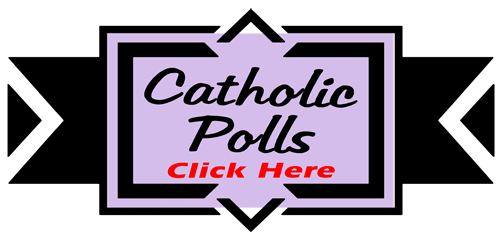
Home
MCS Daily Digest
Quick Guide to This Site
What's New
Reception Desk
Notices
Topic Pages
'Quick Help' Pages
Books / Ebooks |
Kindle Scribe Books
Apps
Reflections
Help |
'Live Chat'
Coming Soon
Featured Sections
URL Shortcuts
Calendar
Goals / Purpose
This site is really free?
How can I add a "post" here?
Mission Statement
Privacy Statement
Imprimatur Information
Terms of Use
by using this site, you agree to all terms
MCS Directory
Community Center
Commercial Areas
Non-Catholics
About Us
FAQs
Tell a Friend
Invite a Business
Link to Us
My Catholic Source.com Blog & RSS Feed Info.
Third Party Programs
Awards
Feedback
Contact Us
This site powered by
bfsnet.com

|
|
Now Available!
Catholic Word Search - JUMBO Edition

(Original)

(Large Print Edition)
100+ Catholic Word Searches (Incl. Advent,
Christmas, Lent, Easter, Jesus, B.V.M., Angels, Saints, Sacraments, Grace, Rosary, Fatima, And More...)
"Relaxing, educational, good
for your memory, mind, focus, vocabulary, and good for your soul!"
Get Your Copy Today!
Also
Available...
Catholic
Word Search - Bilingual Edition: Latin / English
Search Words In Latin, Meanings In English

55 Catholic Word Searches ~ "Tradition-Minded,
Relaxing & Educational!"
Topics Include: Advent, Christmas, Lent,
Easter, Jesus, B.V.M., Angels, Saints, Sacraments, Rosary & More...
"Perfect For Catholic
Teens & Adults!" ~ "Great For Home Schoolers!"
Get Your Copy Today!
Why Latin? / Latin Info.
Click link or image above for more information & to purchase.
And...
Catholic
Word Search - Bilingual Edition: French / English
Search Words In French, Meanings In English

Absolutely NO Knowledge Of
French Is Required!
50+ Catholic Word Searches ~ "Tradition-Minded,
Relaxing & Educational!"
Topics Include: Advent, Christmas, Lent,
Easter, Jesus, B.V.M., Angels, Saints, Sacraments, Rosary & More...
"Perfect For Catholic Teens & Adults!" ~ "Great
For Home Schoolers!"
Fun for any time! Also great for...
* Planning a Catholic pilgrimage to France
* Learning some (or brushing up on some) French
words
* Increasing your French vocabulary
* Adding fun to a homeschool curriculum
* Enjoying a unique challenge, even if you
don't speak a word of French!
Free Sample Here
Get Your Copy Today!
Why Learn French?
Click link or image above for more information & to purchase.
Now Available!
4
Great Inspirational Catholic Coloring Books...




Plus These Handy Coloring Books & Resources...
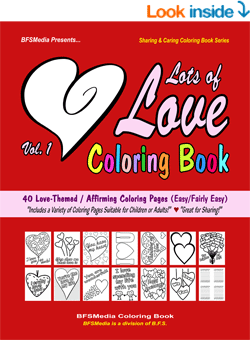
Lots of Love Coloring Book (Vol.1) - 40 Love-Themed / Affirming Coloring Pages (Easy/Fairly Easy) - "Includes a Variety of Coloring Pages Suitable for Children or Adults!" ~ "Great for Sharing!"

My Colors - Easy & Convenient Color Sample
Sheets ~ Coloring Resources Book: 125+ Assorted Color Sample Sheets - "Perfect
For Testing, Selecting & Organizing Pen, Marker, Pencil or Crayon Colors!"
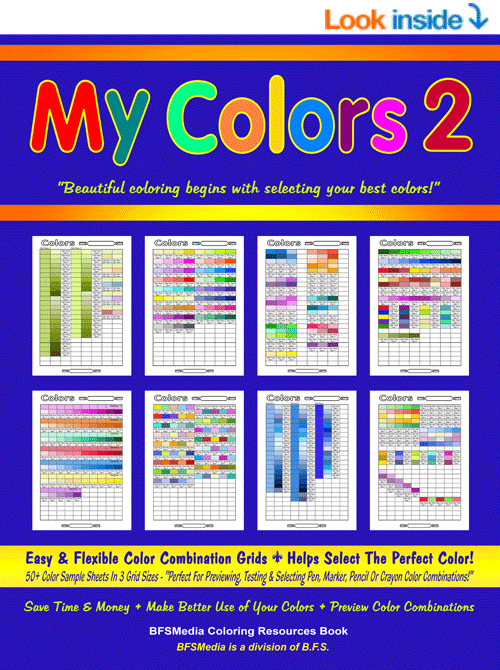
My Colors 2 - Easy & Flexible Color
Combination Grids ~ Coloring Resources Book: 50+ Color Sample Sheets In 3 Grid
Sizes - "Perfect For Previewing, Testing & Selecting Pen, Marker, Pencil Or
Crayon Color Combinations!"
[Please Note: Proceeds from sales of these books may support My Catholic Source.com]
For More Information & To
Purchase, Click Image(s) Above
Click Here For Coloring Examples
Now Available!
700+ Consoling Thoughts From Holy Scripture
"Inspirational & Uplifting!"
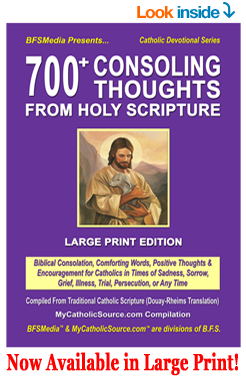
"Some of the most consoling
& comforting words from Holy Scripture, all in one place!"
+ + +
Compiled From Traditional Catholic Scripture
(Douay-Rheims Translation)
Get it today!
+ + +
For More Information & To
Purchase, Click Link Below...
Kindle Version Just $7.99
Notice: Prices are subject to change
without notice and do not include any applicable taxes.
Now Available!
The iStations Book - Stations of the Cross
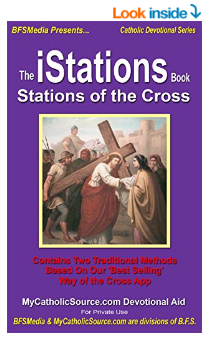
Two Traditional Way of the
Cross Methods for Catholics Based on Our 'Best Selling' App
Features beautiful images, TWO traditional
methods, including a Franciscan method, selected prayers in English & Latin
Get it today!
For More Information & To
Purchase, Click Link Below...
Kindle Version Just $4.99
Notice: Prices are subject to change
without notice and do not include any applicable taxes.
Now Available!
Catholic Annual Prayer Book

Includes: 365+ Daily Prayers (Jan.-Dec.);
Holiday / Seasonal Prayers; Hundreds of Prayers Indexed by Title;
Nearly 200 Aspirations / Short Prayers; Over 100 Latin Prayers & Aspirations; 500+
Topics for Meditation; Hundreds of Prayer Tips & Insights; And More...
Includes prayers drawn from Holy Scripture, the
liturgy, writings of popes & saints, the Raccolta, the Roman Breviary, the Roman
Missal, etc.
A daily prayer companion for
Catholics that is 'suitable for any year'!
Kindle Version Just $8.99
Notice: Prices are subject to change
without notice and do not include any applicable taxes.
Click Here to Buy
Now Available!
Coloring Book For Catholics: 50+ Latin
Prayers
(Beginning - Intermediate - Advanced)

"This 'unique', tradition-minded coloring book
which contains some of the most popular Catholic prayers in Latin is a fun way
to become more familiar with Latin prayers & increase Latin language retention!"
This 'educational & fun' publication is useful
for prayerful relaxation, educational recreation ('learn while you play'),
becoming more familiar with Latin prayers & hundreds of Latin words, learning or
memorizing Latin prayers, increasing Latin retention, and more...
An enjoyable and
instructive tool with respect to Latin (the 'beautiful & majestic language of
heaven' and 'official language of the Church' - a language 'consecrated' by the
inscription on the Cross that helps to foster a universal bond in prayer with
Catholics around the world), this publication is suitable for Catholics of most any
age.
+ + +
"This Catholic coloring book
- which provides hours of wholesome & educational recreation - is so much better
for your soul than television!"
+ + +
Notice: Prices are subject to change
without notice and do not include any applicable taxes.
Click Here to Buy
Now Available!
My Little Latin Mass Coloring Book

25+ Traditional Latin Mass Coloring Images For Children Or Adults [Low
Mass]
"Enjoyable & Educational!"
+ + +
Notice: Prices are subject to change
without notice and do not include any applicable taxes.
Click Here to Buy
Catholic Classics Reprint Now Available!
In Heaven We Know Our Own - Or, Solace for
the Suffering

This 'Catholic Classic', which offers consoling
'proof' that the faithful departed remember, love & care for those in heaven and
for those still remaining on earth, is a "great balm of comfort" to those who
have lost a spouse, child, parent, friend, or other loved one. "A thoughtful
bereavement gift, and a 'must-have' for grieving Catholics!"
Get your copy today!
For More Information & To
Purchase, Click Link Below...
Kindle Version Just $2.99!
Notice: Prices are subject to change
without notice and do not include any applicable taxes.
Now Available!
Setting The Record Straight About Luther
Important Things Catholics Should Know About
The 'Reformer'

Don't miss this
'eye-opening' treatise concerning Martin Luther, the catalyst / leader of the
' Reformation ' (a.k.a. Protestant Rebellion)
Includes: Facts which demonstrate that Luther
was NOT sent by God, Luther received approval of his teaching from Satan,
Luther's misbehavior, some results of Luther's teachings, Luther admits he could
be wrong, and more...
Get your copy today!
For More Information & To
Purchase, Click Link Below...
Kindle Version Just $5.99
Notice: Prices are subject to change
without notice and do not include any applicable taxes.
Now Available!
BIG Book of Latin Activities For Catholics
Beginning - Intermediate (Vol. 1)

"Suitable For Children Or
Adults!" ~ "Perfect For Home Schoolers!"
+ + +
As many faithful Catholics already know,
the majestic
Latin language – the 'official language' of the Catholic Church –
promotes unity, helps safeguard the purity of doctrine, connects us with
our Catholic ancestors, allows us to pray in "one voice", and even ties
back to the inscription on the Cross which was written in Hebrew, Latin,
and Greek. The Latin language is still used today in the precious
treasure that is the
Traditional Latin ('Tridentine') Mass, in 'everyday speech' (much of
English is derived from Latin), in mottos, in specialized fields, and in
educational endeavors. It has been shown that the study of Latin brings
many benefits. "And, Latin is truly the language of heaven!"
If you enjoy Latin, you may be glad to know that
this full-sized (8.5" x 11"), tradition-minded publication features an
assortment of activity types related to Latin (including: word searches,
crosswords, coloring activities, challenges, fill-ins, spelling bee,
quizzes, unscrambles, true/false, multiple choice, matching, cross-offs,
circling, word associations, translation exercises, and more...), and
treats of various topics (including: common Latin words, Latin language
facts, Latin grammar, nouns & verbs, abbreviations,
phrases / sayings / mottos, prefixes, cardinal numbers, grammatical gender,
inflection, word roots, diacritics / accenting, pronunciation, Latin
prayers / hymns, Scripture verses, Catholic phrases, and more...).
+ + +
" Fun & Educational! "
Get Your Copy Today!
Click Here For More Information & To Purchase
Now Available!
Activity Books For Kindle Scribe

Write-On Books For Scribe!
Click Here For More Information
Try Here For Great Catholic Apps!

My Crucifix
For the iPad®, iPhone®,
and iPod touch®...

For the iPad®...













And Other Great Apps...











More My Catholic Source.com Media: Books & Ebooks
|
|
|
|